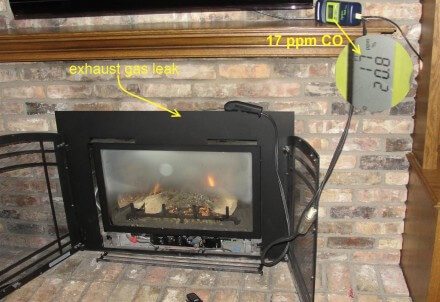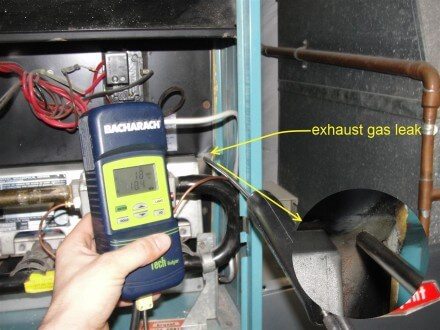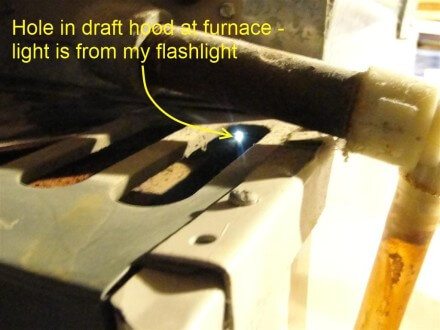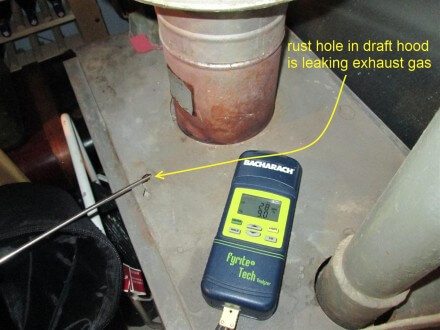This has happened to me dozens of times, so I have to assume it happens to other home inspectors around the country every day. I report a problem with a gas appliance, saying there is exhaust gas leaking in to the house, and I say it needs to be fixed because it’s a safety hazard; exhaust gas contains carbon monoxide.
The next day I get an accusatory call from the seller or their agent, asking why the brand new CO alarm never went off if there was a safety hazard at the house. What’s being insinuated in these cases is ‘you’re wrong’. In a recent phone call like this, the seller even went so far as to ask me why he was still alive.
I didn’t engage.
The simple answer is that UL listed carbon monoxide alarms will not alert you to low levels of carbon monoxide. Carbon monoxide alarms keep people from dying; they don’t eliminate all health risks. Underwriters Laboratory standard UL2034 requires carbon monoxide alarms to not sound off when exposed to carbon monoxide levels under 30 parts per million (ppm). This means that if you have a furnace with a CO reading of 25 ppm in the flue gas, you could place the carbon monoxide alarm right inside the furnace’s vent and it would never go off.
Even at higher CO levels, UL listed CO alarms might take a long time to sound off – long enough for you to start experiencing symptoms of carbon monoxide poisoning. Seattle home inspector Charles Buell just wrote a post on this topic, where he tells the story of how a kitchen stove was producing CO levels at over 600 parts per million, but the UL listed CO alarm never made a peep.
Does this mean that low levels of carbon monoxide are safe? No. There are numerous studies saying that low levels of carbon monoxide exposure cause health problems; there are links to many such studies at CO-Experts Home Page. Even though this web site looks like it was designed in the early 90’s without being touched since, it has some good information. Another low-level CO monitor is the NSI 3000.
How do you know if your equipment is leaking exhaust gas? The best way to know is to have it professionally checked. A combustion analyzer can easily locate exhaust gas leaks. Most of the exhaust gas leaks that I find seem to happen at the same locations over and over.
Gas Fireplaces often leak exhaust gas around the glass if the glass has been removed for cleaning, but not secured back in place properly.
Furnaces often leak exhaust gas at the burner area, or at the draft hood. A telltale sign of an exhaust gas leak on a furnace is a rust line curving up around the burner shield or draft hood.
Boilers often leak exhaust gas right through the jacket – pay special attention to any rust holes in the jacket of the boiler.
Water heaters leak exhaust gas right at the draft hood (backdrafting), or leak exhaust gas at the burner area when the heat roll-out shield is missing.
This is only a partial list of the places that you could have exhaust gas leaks in your home, but this easily makes up 95% of the exhaust gas leaks that I find during home inspections. If you suspect an exhaust gas leak in your home at any of these locations, hire a professional to check it out.
For the best protection against low levels of carbon monoxide, buy a low-level carbon monoxide detector. This should be considered a supplement to the UL listed CO alarm that is required – see Minnesota requirements for CO Alarms.
Reuben Saltzman, Structure Tech Home Inspections









Eric
January 16, 2013, 1:23 pm
Some of the Kidde CO alarms have “peak” buttons which claim to show the lowest detected level (down to 11ppm). However, I have one in our boiler room, and the peak button has never shown anything but 0. So either I’m doing OK, or the sensor is bogus, I don’t know. 🙂
Unintended Consequences of Adding Insulation | Structure Tech Home Inspections
February 5, 2013, 2:37 pm
[…] flue. When back drafting happens, these gases spill into the house, causing a potential buildup of carbon monoxide. Unintentional carbon monoxide exposure accounts for an estimated 15,000 emergency department […]
G
March 20, 2013, 12:47 pm
Very good explanations and pictures, wish you was in New Mexico. Eric, yes the Kiddle CO alarms will print 11ppm without alarming, you can see it when you press the peak button.